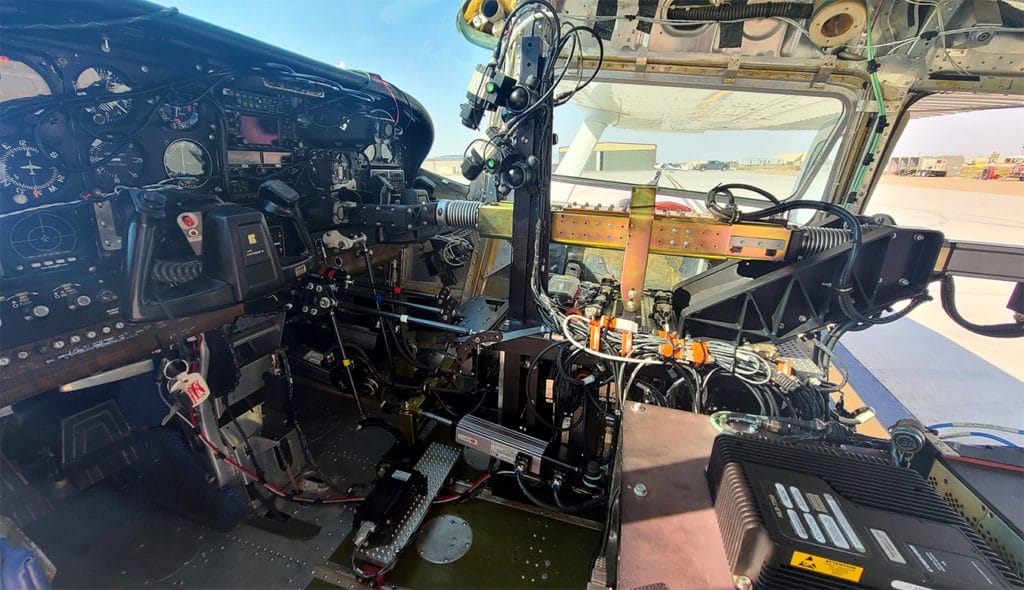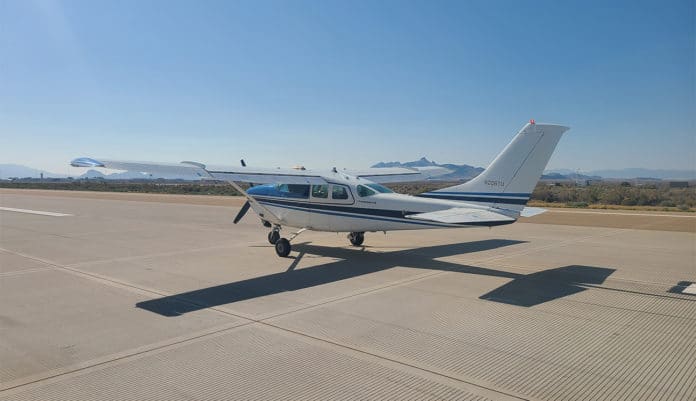The Air Force Research Laboratory (AFRL) has resumed flight tests of the ROBOpilot unmanned air platform, which can turn virtually any plane into an unmanned aerial vehicle with minimal design intervention.
Developed in cooperation with DZYNE Technologies, the robotic pilot performed a 72-minute flight at Dugway Proving Ground, Utah, and was able to take off, maintain level flight, make turns and land the aircraft. During the successful flight test on September 24, 2020, the ROBOpilot flew for approximately 2.2 hours, completing all test objectives.
This was the fourth flight of the robot carried out under the flight test program, which started in August last year. Last summer, tests of the system were interrupted due to an accident that occurred during a landing mishap after a two-hour-flight. The developers noted that they modified the robot and installed it on the new single-engine Cessna 206. In addition, aircraft control algorithms were slightly changed.

Armed with the incident report, “the CRI and DZYNE team analyzed the findings and incorporated the recommendations to ensure the success of this latest test,” said Marc Owens, CRI’s Program Manager for ROBOpilot. “We determined the cause of the mishap, identified the best course of corrective action, and we’re very pleased to be flight testing again,” he said.
As mentioned above, the ROBOpilot is a universal autonomous aircraft control system that converts a general aviation aircraft into an unmanned aerial vehicle rapidly and affordably without making any permanent modifications to the aircraft. It consists of a computing system, an industrial manipulator for interacting with switches on panels in the cockpit, actuators for manipulating the steering wheel and levers, and a set of cameras for monitoring the instrument panel.
The robot can be relatively quickly installed in the cockpit of a light aircraft by removing the seats and attaching the robot to the seat rails. The system can fly missions autonomously and then be removed to return the plane to its manned configuration. The system also includes a GPS receiver and an inertial measurement unit, but these sensors are not enough for a reliable landing.
